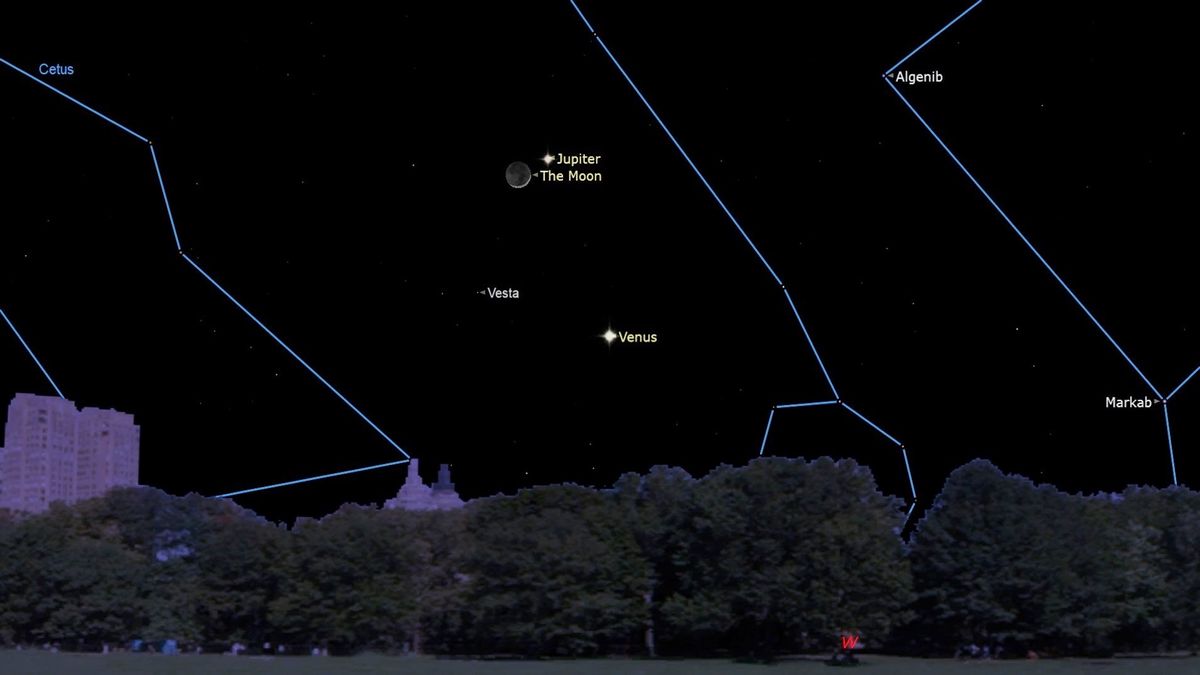
As far as celestial objects in the night sky go, the moon is by far the brightest, with Venus coming in a distant second. On Wednesday (Feb. 22), you'll be able to spot the two making a close approach.
That approach, technically called an appulse, will be visible Wednesday from New York between 7:52 a.m. EST (1252 GMT) and 7:59 p.m. EST (0059 GMT on Feb. 23), according to skywatching site In-the-Sky.org (opens in new tab). Of course, the majority of that period is during daylight hours, which will make observing the appulse a little tricky. But since the sun sets at 5:38 p.m. EST (2238 GMT) in New York City, that gives you a few hours in the evening for solid viewing.
At the same time as the appulse, the moon and Venus will also reach conjunction, which happens when they share the same right ascension (basically, a celestial body's "east-west" position in the sky).
Related: Night sky, February 2023: What you can see tonight
The moon will be just two days old — an extremely thin crescent moon — but it will still appear at magnitude minus 9.7 in terms of brightness. Venus, on the other hand, will be at magnitude minus 4.0. Venus is so bright thanks to its thick, cloud-filled atmosphere that reflects much of the sunlight that reaches it. (On the magnitude scale used by astronomers, lower numbers indicate brighter objects.)
Jupiter is the next brightest celestial body in the night sky, and on Wednesday, it will be at magnitude minus 2.12. The planet will also be near the moon — in fact, the moon will be sandwiched between Jupiter and Venus. (On March 1, the two planets will make their closest approach.)
If you want to get an up-close look at the moon and Venus during their conjunction and appulse — plus a view of nearby Jupiter — our guide to the best binoculars is a great place to start. And though you won't be able to see both the moon and Venus within the field of view of a telescope, you can still get excellent views of each individually — take a peek at our guide to the best telescopes.
And if you're looking to photograph the celestial event, gear up with our guides to the best cameras for astrophotography and the best lenses for astrophotography, then check out our guide on how to photograph the moon,
Editor's Note: If you snap the conjunction of the moon and Venus and would like to share it with Space.com's readers, send your photo(s), comments, and your name and location to spacephotos@space.com.
Follow Stefanie Waldek on Twitter @StefanieWaldek (opens in new tab). Follow us on Twitter @Spacedotcom (opens in new tab) and on Facebook (opens in new tab).
Article From & Read More ( See the moon and Venus dance together in Wednesday evening's sky - Space.com )https://ift.tt/2Eunsio
Science
No comments:
Post a Comment